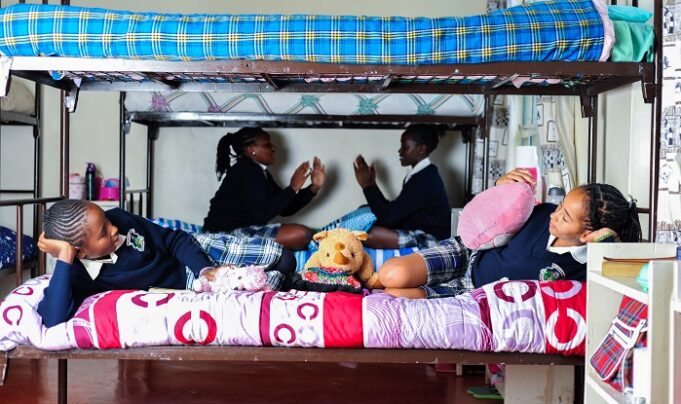Magoha-Appointed CBC Task force proposes Scrapping of boarding schools in new curriculum
Parents should be ready to have their children at home as an education task force has proposed scrapping of boarding in secondary schools.
According to the task force, boarding facilities will be reserved for a few institutions that will admit learners across the country to pursue various pathways in senior secondary schools as envisioned under the new 2-6-3-3-3 education system.
And all children leaving Grade Six at the end of primary education will be required to enroll in the nearby secondary school for the three-year junior secondary education.
This is after the team roundly agreed that the junior secondary schools be domiciled at the high school level and not primary section as was proposed by some stakeholders.
Read also:
The New Diploma In Primary Teacher Education (DPTE) Course-Requirements, Intake and application
KUPPET Opposes Proposed Amendment To Strip Heads Supervisory powers
School Heads to lose Supervisory Roles As Ministry Proposes to hire school managers
Stop Hypocrisy And Keep Off Our Issues With TSC, KNUT Snabs KUPPET
KNEC October 2020 Grade 4 and Class Eight Assessment Report Per Subject
October 2020 Assessment Predicts Mass failure among 2020 KCPE Candidates
How To Apply For Replacement Of Your Lost KNEC Certificate Online
All parents will now be required to enroll their children in secondary schools within radius of about five kilometres.
This means parents must now prepare to have their children at home most of the time, under the day school programmes.
The task force feels that this will be one of the solutions to the perennial fires that gut down schools’ property and threaten children’s lives in boarding schools.
The recommendation was, however, based on the reasoning that most primary schools have a secondary wing and it would be easy to transition primary school children to the available spaces in adjacent facilities.
The team also proposes that children should not sit the Kenya Certificate of Primary Education (KCPE) examination at the end of the sixth year under the new curriculum.
The first national examination will be done at the end of junior secondary and will be used to place learners in various pathways at senior secondary schools.
Another national examination will be done at the end of senior secondary education (Grade 12) and will be used to place the learners to universities and colleges.
These proposals were made by the Competency Based Curriculum (CBC) task force, which is chaired by Kenyatta university Vice chancellor, Fatuma Chege to solve the transition headache of children from primary to secondary school under the new curriculum.
“These were the final proposals of the team. However, some details may slightly change as only a small team was tasked to polish the final report that was shared with the CS,” said a member of the task force.
Under the new the 2–6–3–3–3 education system, learners will spend two years in pre-primary education, six in primary, three in junior secondary, three in senior secondary school and another three in university.
Education Cabinet Secretary George Magoha had previously hinted at the possibility of scrapping KCPE national examination.
Magoha had earlier said the Government would administer national examinations at the end of Grade Nine and Grade 12 of the CBC.
“As government, we have decided that there will be an examination after Year Nine and after Year 12. The discourse of Year Six will be for the task-force to advise us,” Magoha said in 2020.
KCPE will be replaced with continuous school assessments that will be done internally.
However, sources have it that some form of assessment would be implemented at the end of primary education (Grade Six) to gauge learners understanding of subject areas. school-based assessments would be carried out as was the case in the recent exercise when learners reported to schools after the prolonged closure of schools.
“The thinking is not to test children for transition purposes, but to monitor their learning progress by gauging their understanding of the subject areas for levelled interventions,” said a member of the task force.
The new curriculum requires that after junior secondary education, each student will choose what to pursue among three areas: arts and sports science; social sciences; or science, technology, engineering and mathematics.
It emerged the team proposed that some of the top schools be converted into special institutions offering the various pathways.
This means the institutions will have boarding component as the pathways may attract learners from across the country.
Another headache however arose on what practice would be adopted in cases where learners who live around the targeted top pathway schools would wish to be admitted for junior secondary education.




